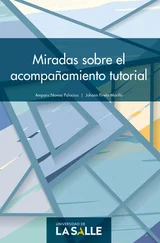Oskar Andreasson - Iptables Tutorial 1.2.2
Здесь есть возможность читать онлайн «Oskar Andreasson - Iptables Tutorial 1.2.2» весь текст электронной книги совершенно бесплатно (целиком полную версию без сокращений). В некоторых случаях можно слушать аудио, скачать через торрент в формате fb2 и присутствует краткое содержание. Жанр: Интернет, на русском языке. Описание произведения, (предисловие) а так же отзывы посетителей доступны на портале библиотеки ЛибКат.
- Название:Iptables Tutorial 1.2.2
- Автор:
- Жанр:
- Год:неизвестен
- ISBN:нет данных
- Рейтинг книги:4 / 5. Голосов: 1
-
Избранное:Добавить в избранное
- Отзывы:
-
Ваша оценка:
- 80
- 1
- 2
- 3
- 4
- 5
Iptables Tutorial 1.2.2: краткое содержание, описание и аннотация
Предлагаем к чтению аннотацию, описание, краткое содержание или предисловие (зависит от того, что написал сам автор книги «Iptables Tutorial 1.2.2»). Если вы не нашли необходимую информацию о книге — напишите в комментариях, мы постараемся отыскать её.
Iptables Tutorial 1.2.2 — читать онлайн бесплатно полную книгу (весь текст) целиком
Ниже представлен текст книги, разбитый по страницам. Система сохранения места последней прочитанной страницы, позволяет с удобством читать онлайн бесплатно книгу «Iptables Tutorial 1.2.2», без необходимости каждый раз заново искать на чём Вы остановились. Поставьте закладку, и сможете в любой момент перейти на страницу, на которой закончили чтение.
Интервал:
Закладка:
When all of these steps are finished, you can deinstall the currently installed ipchains and iptables packages. This because we don't want the system to mix up the new iptables user-land application with the old preinstalled iptables applications. This step is only necessary if you are going to install iptables from the source package. It's not unusual for the new and the old package to get mixed up, since the rpm based installation installs the package in non-standard places and won't get overwritten by the installation for the new iptables package. To carry out the deinstallation, do as follows:
rpm -e iptables
And why keep ipchains lying around if you won't be using it any more? Removing it is done the same way as with the old iptables binaries, etc:
rpm -e ipchains
After all this has been completed, you will have finished with the update of the iptables package from source, having followed the source installation instructions. None of the old binaries, libraries or include files etc should be lying around any more.
What's next?
This chapter has discussed how to get and how to install iptables and netfilter on some common platforms. In most modern Linux distributions iptables will come with the default installation, but sometimes it might be necessary to compile your own kernel and iptables binaries to get the absolutely latest updates. This chapter should have been a small help managing this.
The next chapter will discuss how tables and chains are traversed, and in what order this happens and so forth. This is very important to comprehend to be able to build your own working rulesets in the future. All the different tables will be discussed in some depth also since they are created for different purposes.
Chapter 6. Traversing of tables and chains
In this chapter we'll discuss how packets traverse the different chains, and in which order. We will also discuss the order in which the tables are traversed. We'll see how valuable this is later on, when we write our own specific rules. We will also look at the points which certain other components, that also are kernel dependent, enter into the picture. Which is to say the different routing decisions and so on. This is especially necessary if we want to write iptables rules that could change routing patterns/rules for packets; i.e. why and how the packets get routed, good examples of this are DNAT and SNAT. Not to be forgotten are, of course, the TOS bits.
General
When a packet first enters the firewall, it hits the hardware and then gets passed on to the proper device driver in the kernel. Then the packet starts to go through a series of steps in the kernel, before it is either sent to the correct application (locally), or forwarded to another host - or whatever happens to it.
First, let us have a look at a packet that is destined for our own local host. It would pass through the following steps before actually being delivered to our application that receives it:
Table 6-1. Destination local host (our own machine)
| Step | Table | Chain | Comment |
|---|---|---|---|
| 1 | On the wire (e.g., Internet) | ||
| 2 | Comes in on the interface (e.g., eth0) | ||
| 3 | raw | PREROUTING | This chain is used to handle packets before the connection tracking takes place. It can be used to set a specific connection not to be handled by the connection tracking code for example. |
| 4 | This is when the connection tracking code takes place as discussed in the The state machine chapter. | ||
| 5 | mangle | PREROUTING | This chain is normally used for mangling packets, i.e., changing TOS and so on. |
| 6 | nat | PREROUTING | This chain is used for DNAT mainly. Avoid filtering in this chain since it will be bypassed in certain cases. |
| 7 | Routing decision, i.e., is the packet destined for our local host or to be forwarded and where. | ||
| 8 | mangle | INPUT | At this point, the mangle INPUT chain is hit. We use this chain to mangle packets, after they have been routed, but before they are actually sent to the process on the machine. |
| 9 | filter | INPUT | This is where we do filtering for all incoming traffic destined for our local host. Note that all incoming packets destined for this host pass through this chain, no matter what interface or in which direction they came from. |
| 10 | Local process or application (i.e., server or client program). |
Note that this time the packet was passed through the INPUT chain instead of the FORWARD chain. Quite logical. Most probably the only thing that's really logical about the traversing of tables and chains in your eyes in the beginning, but if you continue to think about it, you'll find it will get clearer in time.
Now we look at the outgoing packets from our own local host and what steps they go through.
Table 6-2. Source local host (our own machine)
| Step | Table | Chain | Comment |
|---|---|---|---|
| 1 | Local process/application (i.e., server/client program) | ||
| 2 | Routing decision. What source address to use, what outgoing interface to use, and other necessary information that needs to be gathered. | ||
| 3 | raw | OUTPUT | This is where you do work before the connection tracking has taken place for locally generated packets. You can mark connections so that they will not be tracked for example. |
| 4 | This is where the connection tracking takes place for locally generated packets, for example state changes et cetera. This is discussed in more detail in the The state machine chapter. | ||
| 5 | mangle | OUTPUT | This is where we mangle packets, it is suggested that you do not filter in this chain since it can have side effects. |
| 6 | nat | OUTPUT | This chain can be used to NAT outgoing packets from the firewall itself. |
| 7 | Routing decision, since the previous mangle and nat changes may have changed how the packet should be routed. | ||
| 8 | filter | OUTPUT | This is where we filter packets going out from the local host. |
| 9 | mangle | POSTROUTING | The POSTROUTING chain in the mangle table is mainly used when we want to do mangling on packets before they leave our host, but after the actual routing decisions. This chain will be hit by both packets just traversing the firewall, as well as packets created by the firewall itself. |
| 10 | nat | POSTROUTING | This is where we do SNAT as described earlier. It is suggested that you don't do filtering here since it can have side effects, and certain packets might slip through even though you set a default policy of DROP. |
| 11 | Goes out on some interface (e.g., eth0) | ||
| 12 | On the wire (e.g., Internet) |
In this example, we're assuming that the packet is destined for another host on another network. The packet goes through the different steps in the following fashion:
Table 6-3. Forwarded packets
| Step | Table | Chain | Comment |
|---|---|---|---|
| 1 | On the wire (i.e., Internet) | ||
| 2 | Comes in on the interface (i.e., eth0) | ||
| 3 | raw | PREROUTING | Here you can set a connection to not be handled by the connection tracking system. |
| 4 | This is where the non-locally generated connection tracking takes place, and is also discussed more in detail in the The state machine chapter. | ||
| 5 | mangle | PREROUTING | This chain is normally used for mangling packets, i.e., changing TOS and so on. |
| 6 | nat | PREROUTING | This chain is used for DNAT mainly. SNAT is done further on. Avoid filtering in this chain since it will be bypassed in certain cases. |
| 7 | Routing decision, i.e., is the packet destined for our local host or to be forwarded and where. | ||
| 8 | mangle | FORWARD | The packet is then sent on to the FORWARD chain of the mangle table. This can be used for very specific needs, where we want to mangle the packets after the initial routing decision, but before the last routing decision made just before the packet is sent out. |
| 9 | filter | FORWARD | The packet gets routed onto the FORWARD chain. Only forwarded packets go through here, and here we do all the filtering. Note that all traffic that's forwarded goes through here (not only in one direction), so you need to think about it when writing your rule-set. |
| 10 | mangle | POSTROUTING | This chain is used for specific types of packet mangling that we wish to take place after all kinds of routing decisions have been done, but still on this machine. |
| 11 | nat | POSTROUTING | This chain should first and foremost be used for SNAT. Avoid doing filtering here, since certain packets might pass this chain without ever hitting it. This is also where Masquerading is done. |
| 12 | Goes out on the outgoing interface (i.e., eth1). | ||
| 13 | Out on the wire again (i.e., LAN). |
As you can see, there are quite a lot of steps to pass through. The packet can be stopped at any of the iptables chains, or anywhere else if it is malformed; however, we are mainly interested in the iptables aspect of this lot. Do note that there are no specific chains or tables for different interfaces or anything like that. FORWARD is always passed by all packets that are forwarded over this firewall/router.
Читать дальшеИнтервал:
Закладка:
Похожие книги на «Iptables Tutorial 1.2.2»
Представляем Вашему вниманию похожие книги на «Iptables Tutorial 1.2.2» списком для выбора. Мы отобрали схожую по названию и смыслу литературу в надежде предоставить читателям больше вариантов отыскать новые, интересные, ещё непрочитанные произведения.
Обсуждение, отзывы о книге «Iptables Tutorial 1.2.2» и просто собственные мнения читателей. Оставьте ваши комментарии, напишите, что Вы думаете о произведении, его смысле или главных героях. Укажите что конкретно понравилось, а что нет, и почему Вы так считаете.








